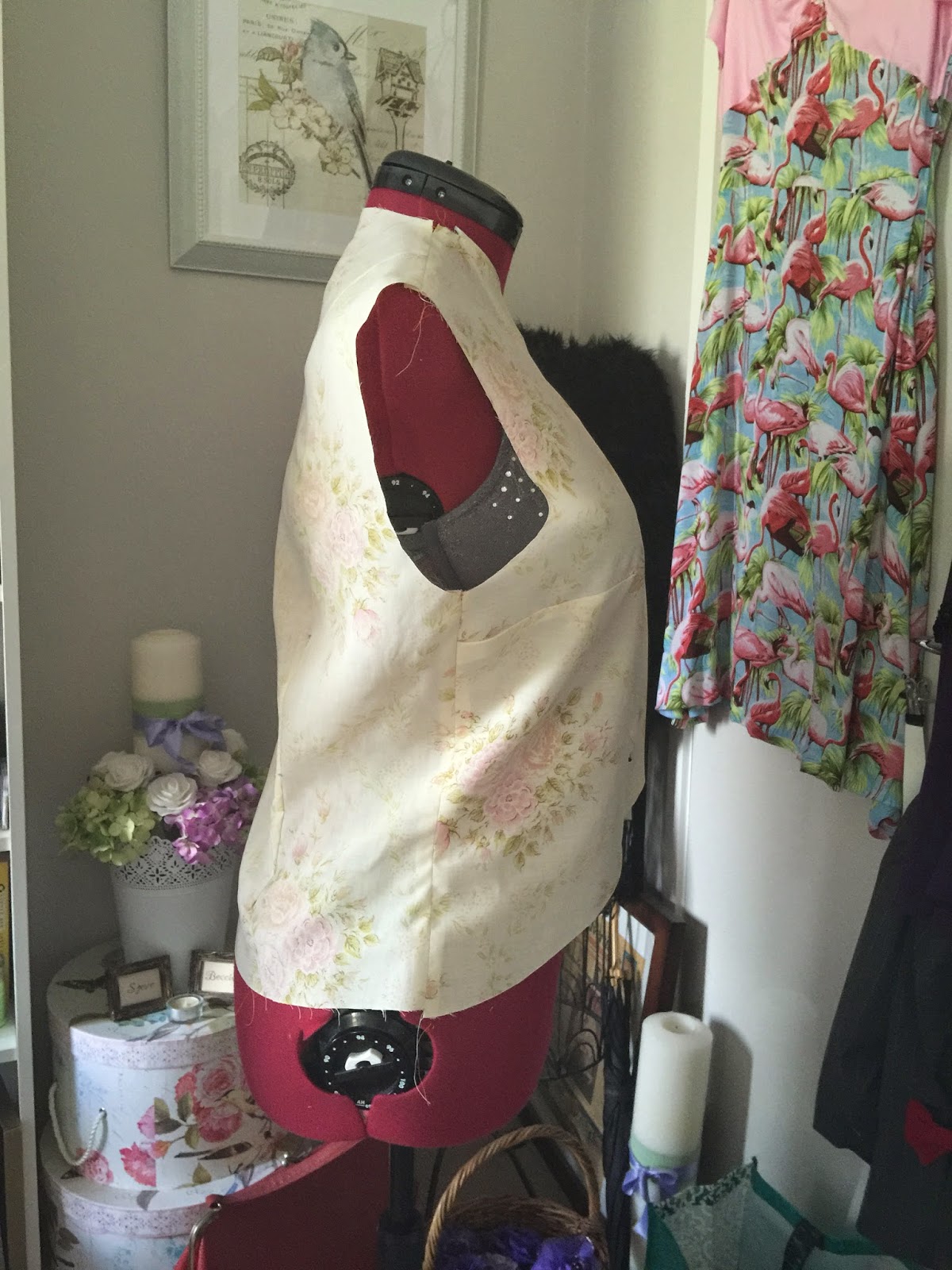Yep, bound button-holes. Nothing to be frightened of really, just a bit fiddly. I have confidence in you!!!
If you don't want to do bound ones, you don't have to. The top button-hole is actually in a seam, so we can ignore that one. The bottom one, and any others you've added can either be done as a bound button-hole now, or you can leave it and do machine ones when the rest of the construction is done.
If you want to do machine ones, you'll have to wait for the next post before you continue. But why not try?
Anyhow, after looking at my muslin, I realised that the button-hole at the bottom, and the ones I had added are at the opposite angle to the one in the seam at the top. This might not bother you, but it will bother me. So I've just redrawn them.
So now we need to mark up the bodice fronts, which requires you to select the correct bodice front piece. EVERY TIME I have to do this, I get out a jacket or a coat from my wardrobe to make sure I get it right. The bodice piece you need to be working on is the right front piece.
Now, on the RIGHT SIDE of the fabric, mark up the button hole lines from the pattern piece.
The first step in making a bound button-hole is making the 'window' which holds the lips of the button-hole. But before we can do that we need to work out how big our button-hole needs to be. So I hope you already have your buttons ladies...
First up, measure the width of your button.
And then the height of your button.
Add these two measurements together and you have the width of your window! Mine will be 1.5"
FOR THOSE OF YOU THAT HAVEN'T DONE BOUND BUTTON-HOLES... I want you to practice these techniques on some scrap fabric before you do them on your capelet.
To make the windows, you need however many 3"x3" squares as you have windows (I need 8). For the way I'm going to show you how to do these, you need to make the squares from your fashion fabric.
In the centre of these squares on the wrong side, you need to draw a rectangle that is the width you measured long, and 1/2" wide. If you are more experienced in fiddly things like this, you can make it 1/4" instead.
These then need to be pinned onto the right side of the bodice, right sides together, where the button-holes are going, making sure that the lines you've drawn on the squares line up with the ones on the bodice.
And now we FINALLY get to sew something! Using a short stitch length like 1, sew the squares to the bodice by stitching the lines that form the rectangle, pivoting with your needle down in each corner. Oh, and don't start in a corner, start half way along one of the long sides, and then overlap slightly when you come back to that point. Using the short stitch length means you can be really precise on the corners.
The next step is to cut within the rectangles so you can turn the squares through to the other side. To do this I rip a small way in the centre with my seam ripper.
Then I grab a small pair of sharp scissors and cut the rectangle down the centre, then in a V shape to each corner. Cut as close as you can to the stitching without cutting the stitching.
Then push the squares through the holes you made, and turn the bodice piece over. It looks like a whole bunch of tissue boxes!!!
Now we need to press it all flat so our windows look all purdy!
By the way, don't be tempted to trim anything at this point.
The windows on the piece of the bodice piece that becomes the attached facing, they stay as windows. The windows on the actual bodice need to have lips. There are two ways you can go about this. One way is to use two more squares per buttonhole to make the lips, and the other way is to use the square you've already sewn on to make the lips. I'm showing you the second way, because its quicker and less fiddly (I think).
Conveniently, we have something that is half the size of the window - the bits we cut from the centre! Fold the square over the window and press it, and the stitched bit up.
Fold the side of the square over the ironed up bits, then press and pin.
Congratulations, thats one done! Now repeat for the others.
Using a short stitch length again, sew a line in the seam line around the rectangle.
This isn't easy.
I only did one of mine really well, but the others aren't bad. Besides, the only person who is going to notice is me.... well, now you guys.... but, you know.
Now we can trim on the back side. I've chalked in the seam and fold line - anything that gos beyond or over this line needs to be lopped off.
Your bound button-holes are DONE!!!
Give yourself a pat on the back, and pour yourself a stiff drink.
Beccie
xxx


















































